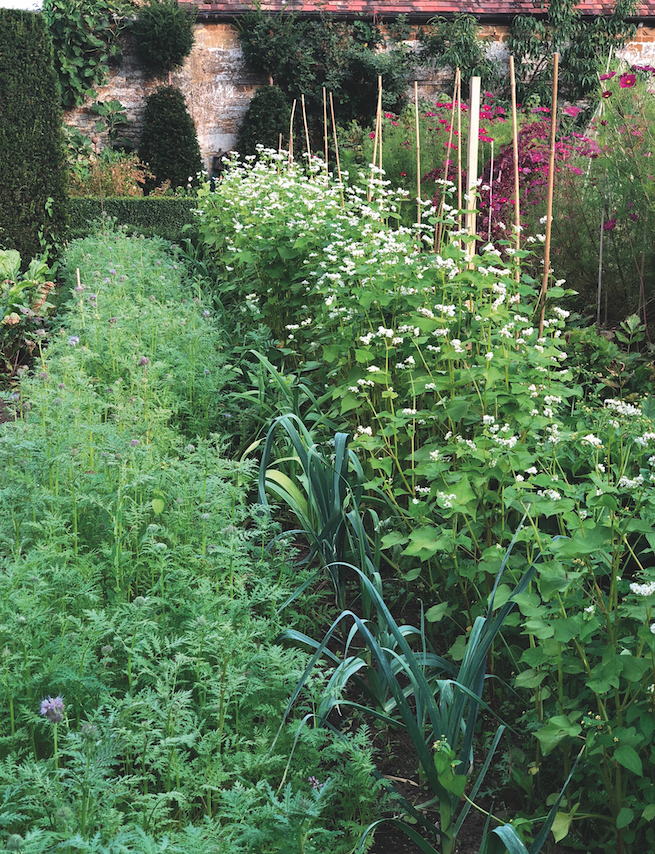A simple guide on how to prepare your beds for planting.
EQUIPMENT
Turf Cutter (if making new beds)
String and stakes (if making new beds)
Broadfork - 35cm or 75cm width depending on your beds. We use a 75cm width broadfork and set our beds to this but the 35cm broadfork is very handy in borders or narrow beds. Or you can aerate with a long-tined fork
Soil rake - we use a copper Perseus rake , a heavy bed preparation rake or a nail rake
Compost - preferably weed free, microbially rich compost
CREATING NEW BEDS FOR PLANTING
If you are creating beds for the first time you must decide on the size of your new beds. It is practical to choose beds that are the width of a broadfork (approx. 75cm wide) or make beds a broadfork width within larger beds and have narrow paths of bricks, grass, straw or low green manures (see our Green Manure Recipes page 48) in between them.
This width is perfect as you can access the beds from either side and there is no need to stand on it.
Mark out the beds using a string and a stake.
If you need to remove turf, we recommend hiring a turf cutter to remove the top 5cm of grass and soil which is where you find most of the weed seed. Roll up the turf and stack in piles to rot down for use in your compost.
Broadfork beds with compost.
REVIVING EXISTING BEDS WITH A BROADFORK AND COMPOST
If your beds are excessively weedy try to remove the worst offenders by hand. If mildly weedy broadfork them to loosen the soil and make weed removal easier. Then broadfork in compost.
MAINTAINING BEDS
It is best to manage the gardens with hoeing and mulching with green manures and leaves in autumn so you do not disturb the soil. However, if you are growing tulips, dahlias or potatoes you will need to dig into the soil, so add a generous amount of compost in the bottom of the planting pockets to add life into the soil.
HOW TO BROADFORK A BED
Ideally do not disturb the soil as the structure is so precious. However if it is compacted or not in good condition we aerate the soil using a broadfork. Never stand on the beds and never have bare soil (ie keep plants growing in soil) so the soil can self-organise and build a humifying structure. This means you can practise no-till and mulch your beds instead of digging. To learn more about no-dig follow Charles Dowding.
METHOD:
Spread 1 to 5cm of microbially rich, weed-free compost on your bed in a strip the width of your broadfork. Starting at one end, stand on the fork so it goes fully into the ground. Lever it back around 45 degrees lifting it gently allowing the air into the soil.
Lift the fork out and walking backwards, put the fork into the ground around 15cm from the first line and repeat. The soil will rise from the surrounding soil by about 10 to 20cm. As you go, the compost will trickle down into the soil. When you have finished go back and then gently rake the soil to prepare the bed for sowing seeds or planting seedlings or plants.




